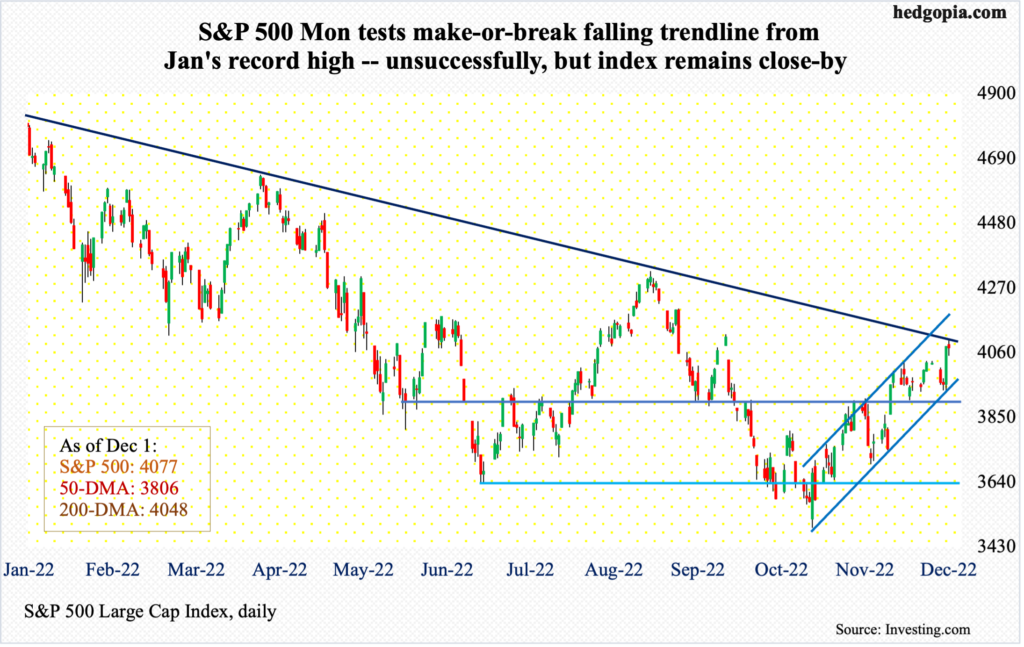The S&P 500 has reached a crucial stage – kind of a make-or-break.
Since peaking at 4819 in January this year, the large cap index has made two important lower highs – one in March and the other in August. Concurrently, it has made lower lows. After the bears defended the falling trendline in August, the index went on to post a new intraday low of 3492 in October. Through that low, it tumbled 27.5 percent from January’s record high. From that low through Thursday’s intraday high of 4101, it has rallied 17.5 percent.
Momentum lies with the bulls, but the index is also getting extended, having rallied for nearly two months now. Longs are playing the seasonality game, but a third lower high could very well be in the making.

Wednesday’s was an important session. The S&P 500 shot up 3.1 percent. Investors were reacting to a perceived dovish speech by Federal Reserve Chair Jerome Powell at the Brookings Institute. In truth, there was nothing dovish about it. He simply repeated what he has been saying for several weeks now – that inflation remains high and that monetary policy will remain restrictive until real progress is made on that front.
Bulls latched on to Powell’s statement on Wednesday that “the time for moderating the pace of rate increases may come as soon as the December meeting.” The FOMC meets on 14-15. In the prior four meetings, the fed funds rate was raised by 75 basis points each, with the benchmark rates currently at a range of 375 basis points to 400 basis points. In essence, he confirmed that they would do a 50 this month. In the futures market, traders were already expecting a raise by that magnitude.
Markets and Powell essentially are talking past each other.
Equity bulls ran away with the word moderation on Wednesday and rallied stocks huge. They were looking to carry the momentum into Thursday but came up short. Thursday’s was a wild session, with a range of 4101 and 4051, closing at 4077; the spinning top session essentially tagged the 200-day moving average at 4048, and that was bought. Bulls were not going to lose the average that easy. After having remained under it since early April, it was recaptured on Wednesday.
If the average continues to find bids in the sessions ahead, the index sooner or later is bound to break out of the trendline in question, and then witness selling pressure at the upper bound of a nearly-two-month-old ascending channel (chart above); Wednesday’s aggressive buying was ignited at the channel support.
Thanks for reading!

